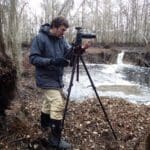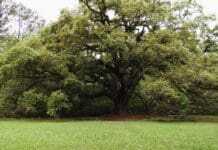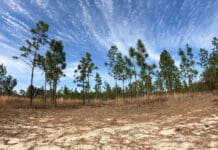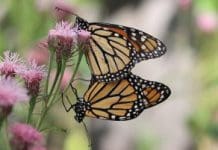

We search the Apalachicola Bluffs and Ravines Preserve for north America’s largest native snake. The Eastern indigo snake was once common in north Florida, but has all but disappeared from the panhandle. The Nature Conservancy’s Apalachicola Bluffs and Ravines Preserve has a healthy gopher tortoise population, which the indigo needs to survive. This is why ABRP is an indigo release site.
When I left for work this morning, I was ready for a day in front of a computer. Within three hours of stepping through my office door, however, I was standing in a forest above the Apalachicola River, in the presence of one of the most magnificent animals I’d ever seen up close. An Eastern indigo snake is an animal worth reshuffling your schedule for.
Yesterday, I had called David Printiss, the North Florida Program Manager for The Nature Conservancy. I’d looked at the weather forecast, and had seen conditions like those he had earlier described. A front was coming through, bringing rain, and today was going to be cool but sunny. The indigos would crawl out of their gopher tortoise burrows to catch that sun; but since it would take a little while for them to warm up, we were more likely to catch them basking.
In other words, a good day to see the indigo snakes released on the Apalachicola Bluffs and Ravines Preserve.
Rob Diaz de Villegas is a senior producer for television at WFSU Public Media, covering outdoors and ecology. After years of producing the music program OutLoud, Rob found himself in a salt marsh with a camera, and found a new professional calling as well. That project, the National Science Foundation funded "In the Grass, On the Reef," spawned the award-winning WFSU Ecology Blog. Now in its tenth year, the Ecology Blog recently wrapped its most ambitious endeavor, the EcoCitizen Project.
Rob is married with two young sons, who make a pretty fantastic adventure squad.





